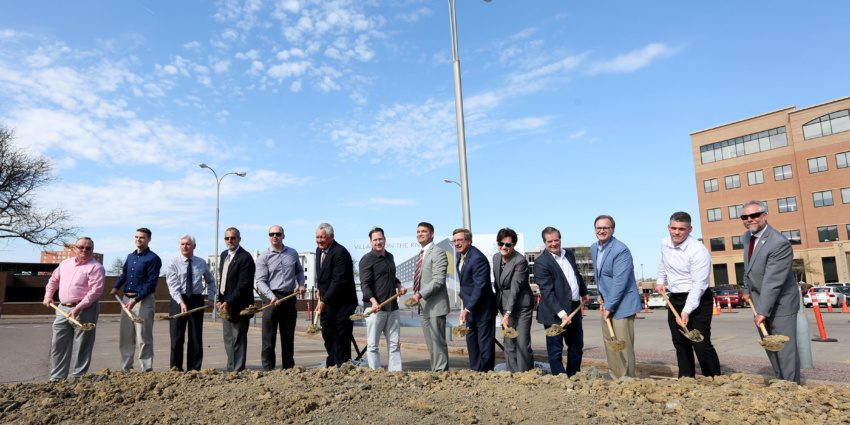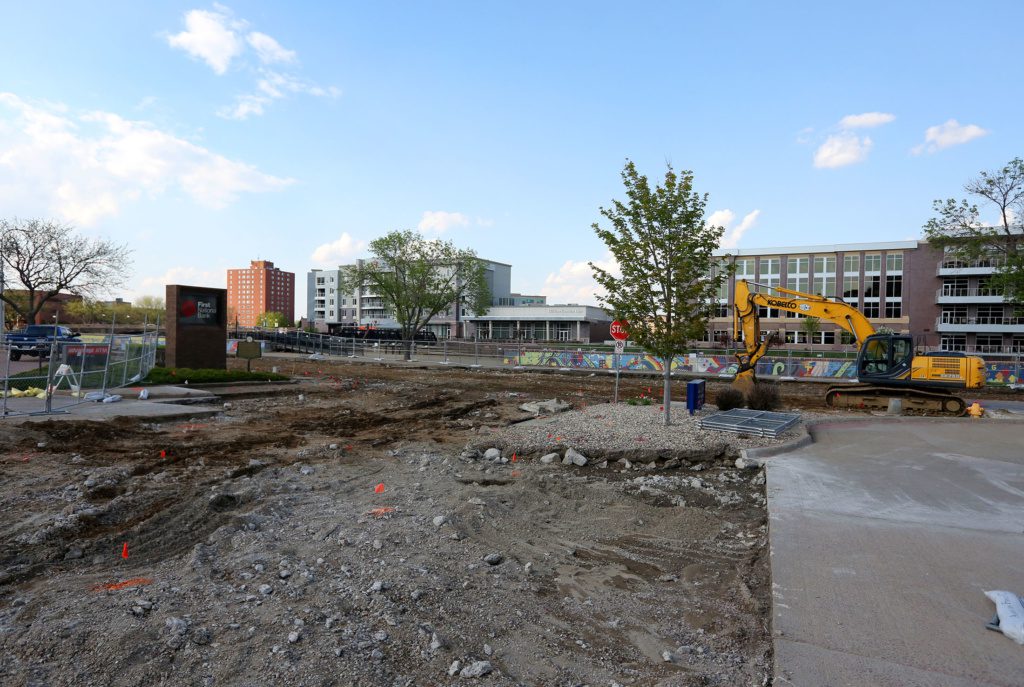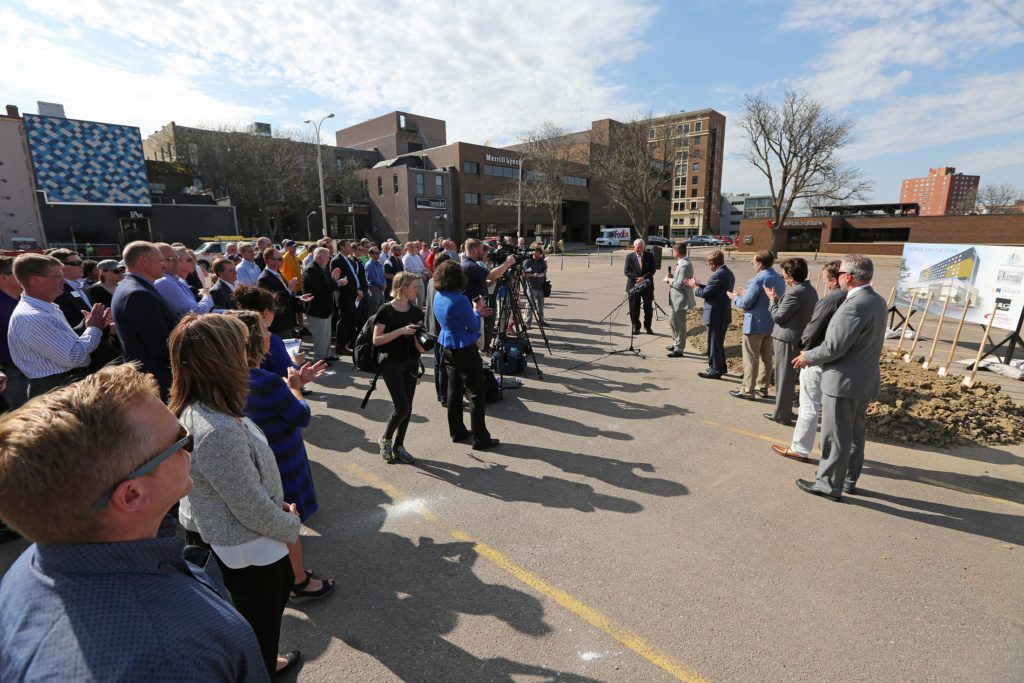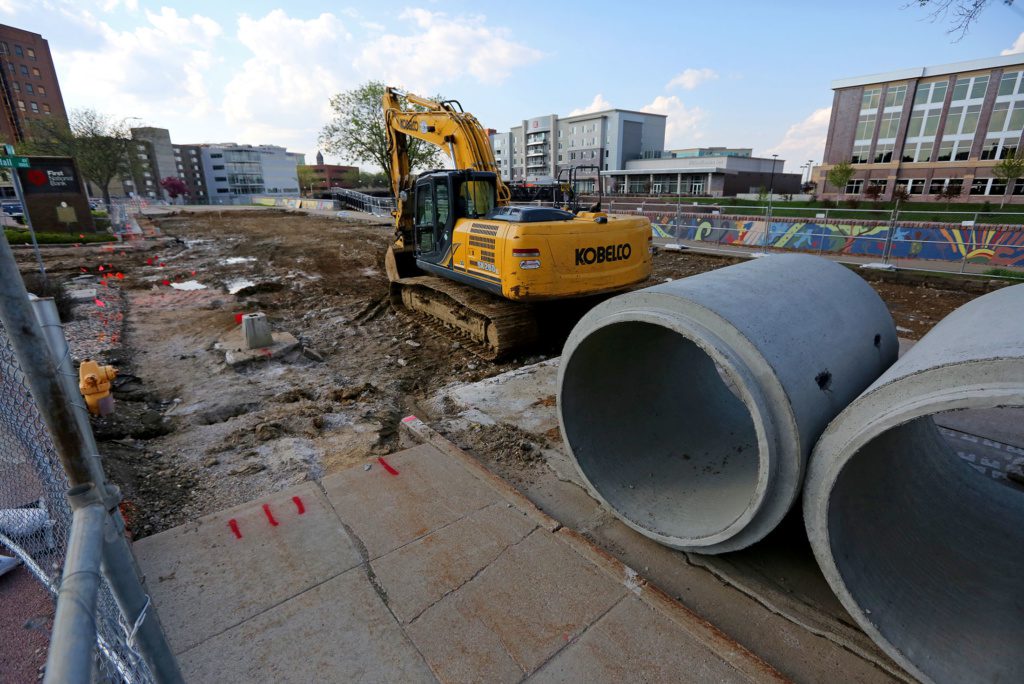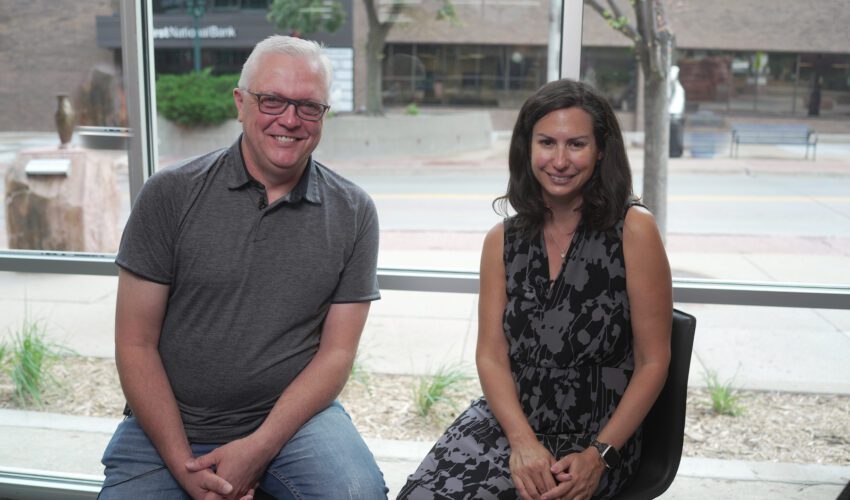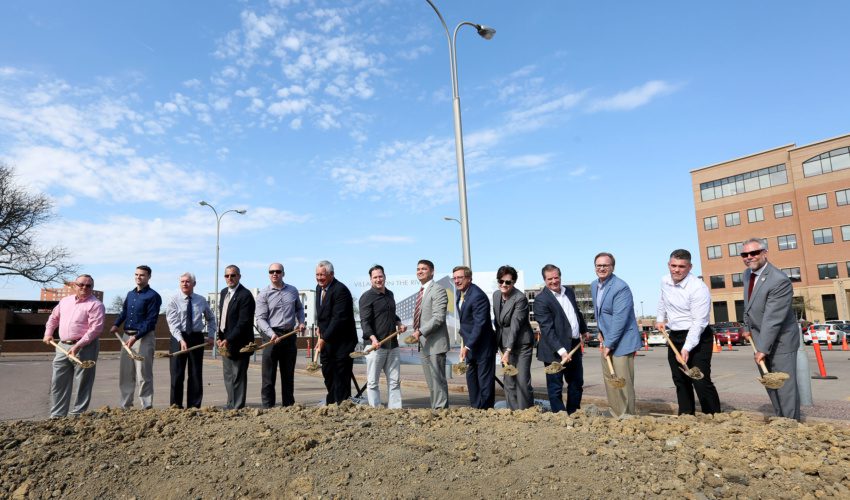Behind the scenes: Building the state’s tallest building
May 16, 2018
This piece is presented by Journey Group.
It’s expected to be 15 stories, include more than 500 parking spaces and take multiple entities, public and private, to create a finished product.
At the center of the Village on the River development in downtown Sioux Falls is Journey Group, the general contractor and construction manager at risk for the estimated $50 million project.
Before anyone put a shovel in the dirt at last week’s ground-breaking, Journey helped start the groundwork more than 18 months ago.
“At that point, we were brought in to provide pre-construction services,” senior project manager Tony Wiseman explained.
“We assisted in analyzing structure types, constructability and market availability. This is instrumental to getting the most value while aligning project scope and budget.”
Working with JLG Architects, Journey began coordination early with a single design team.
“The entire team understood early on that communication and collaboration would be critical to the success of the project,” Wiseman said.
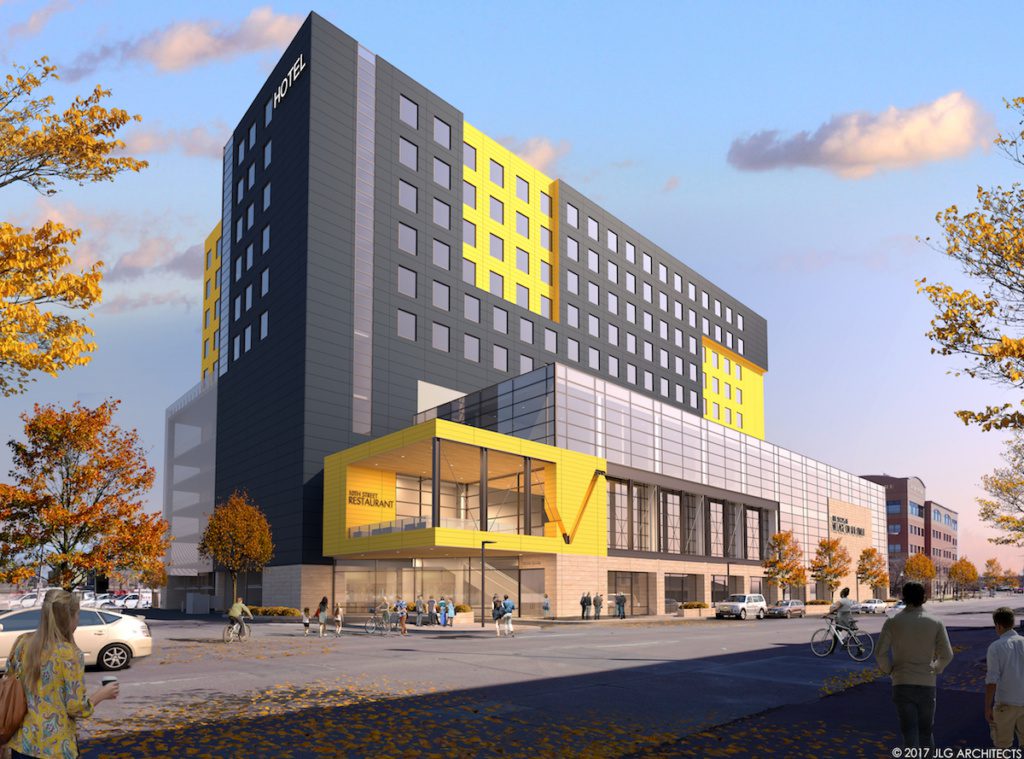
A rendering of Village on the River by JLG Architects.
Journey Group assisted and coordinated lean design concepts, and all stakeholders in the project participated in a design pull planning session.
“It is critical that everyone participates, including the ownership group, end users of the project, and the entire design team included all consultants and disciplines,” Wiseman said.
“As a group, we walked through all the milestones and decisions and, most importantly, commitments to each other. The outcome was a clear road map and expectations of what it takes to keep a project of this complexity moving forward. In doing so, everybody made their commitments to each other and holds each other accountable to those commitments,” Wiseman said.
Journey also will use the same lean concepts throughout construction as new team members join the project.
By identifying all milestones, obstacles and potential constraints up front, “it really builds a clear picture of when we’re supposed to be done and helps the entire team understand up front what they need to do to keep the project moving. It’s true team collaboration and a project schedule built by all stakeholders,” Wiseman added.
The city, which owns the public parking ramp incorporated into the project, appreciated the approach, according to director of community development Daren Ketcham.
“When Journey partners with you, they focus on the entire project, not just the building piece of it,” he said.
“They help you understand the risks involved from a high level down to a low level. To have a construction partner you trust that can go through and find efficiencies and communicate their experience in the field can help you avoid making mistakes others have made.”
The diversity of Journey’s experience helped them win the job, he added.
“There aren’t a lot of companies that have the ability to pull together a project of this scope and complexity, not to mention adding in multiple ownership groups. It takes a special team to do that, and Journey understands it takes all parties working together for a successful project,” Ketcham said.
Collaboration is the foundation, Wiseman agreed.
“I believe the most important piece of any project is getting everyone on the same page and working together,” he said. “Providing leadership and keeping everyone accountable is the key to success. Without all stakeholders in the project working together, it becomes impossible to meet expectations.”
There is still a lot of work to do in the pre-construction phase, but construction is already under way. Starting this month, the construction team will relocate utilities on the property, followed by excavation this summer. This fall, you’ll begin seeing cast-in-place concrete going from the ground up 15 stories through spring and summer of 2019.
Journey will use building information modeling, or BIM, to construct virtual versions of the project and share information with the design team.
“That allows all of us to understand the project at a greater level of detail and turn around estimates in an accurate and timely manner,” Wiseman said. “Moving through construction, we’ll also use BIM modeling to help our mechanical, electrical and plumbing trades model for coordination on prefabrication and installation on the structure.”
This additional coordination technique allows the team members to recognize and adapt to change much quicker and more accurately than if they were limited to paper drawings.
The entire approach earned the approval of Jeff Lamont, founder of developer Lamont Cos., the head of the Village on the River group and operator of the two-brand hotel that’s part of the project.
“Journey has been great,” he said. “They’ve been really good to work with – very informed and organized. We definitely have confidence in them. Those meetings have led me to believe that.”
But behind any Journey project, there’s a “why.” That’s what leaders use to remind the team of the greater purpose behind their work.
In this case, it’s a chance to leave a landmark for the city’s downtown and work on a complex project as part of a team.
“We really enjoy being part of a team that is looking to work together to complete a common goal,” Wiseman said. “This project truly has that element of different parties coming together for different reasons and leaving our community a better place.”

